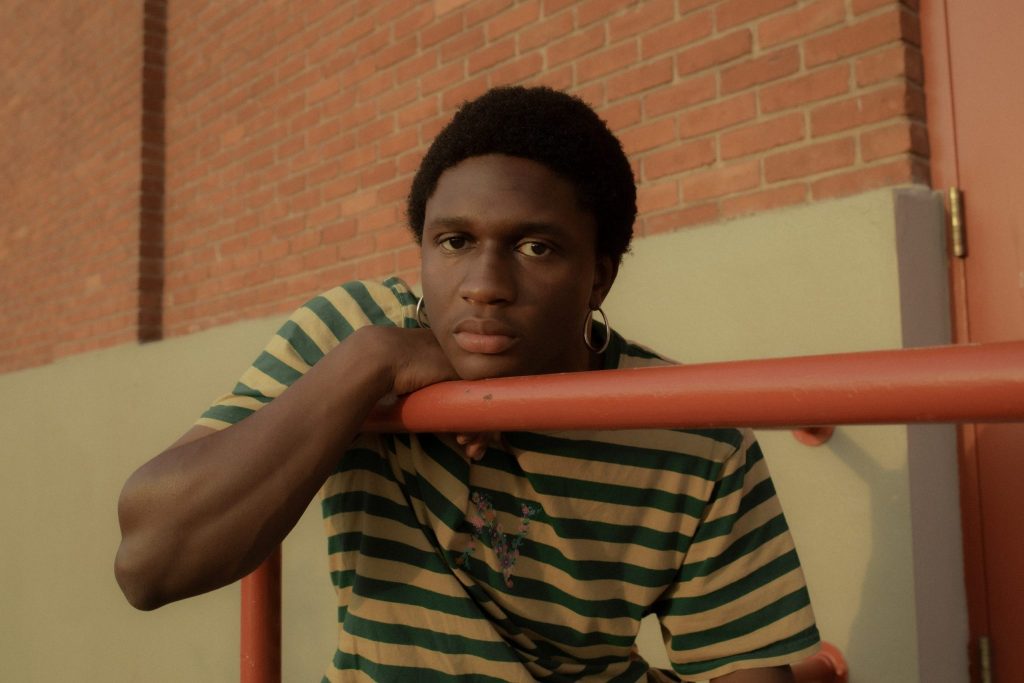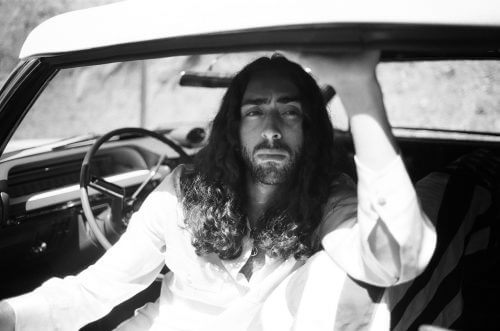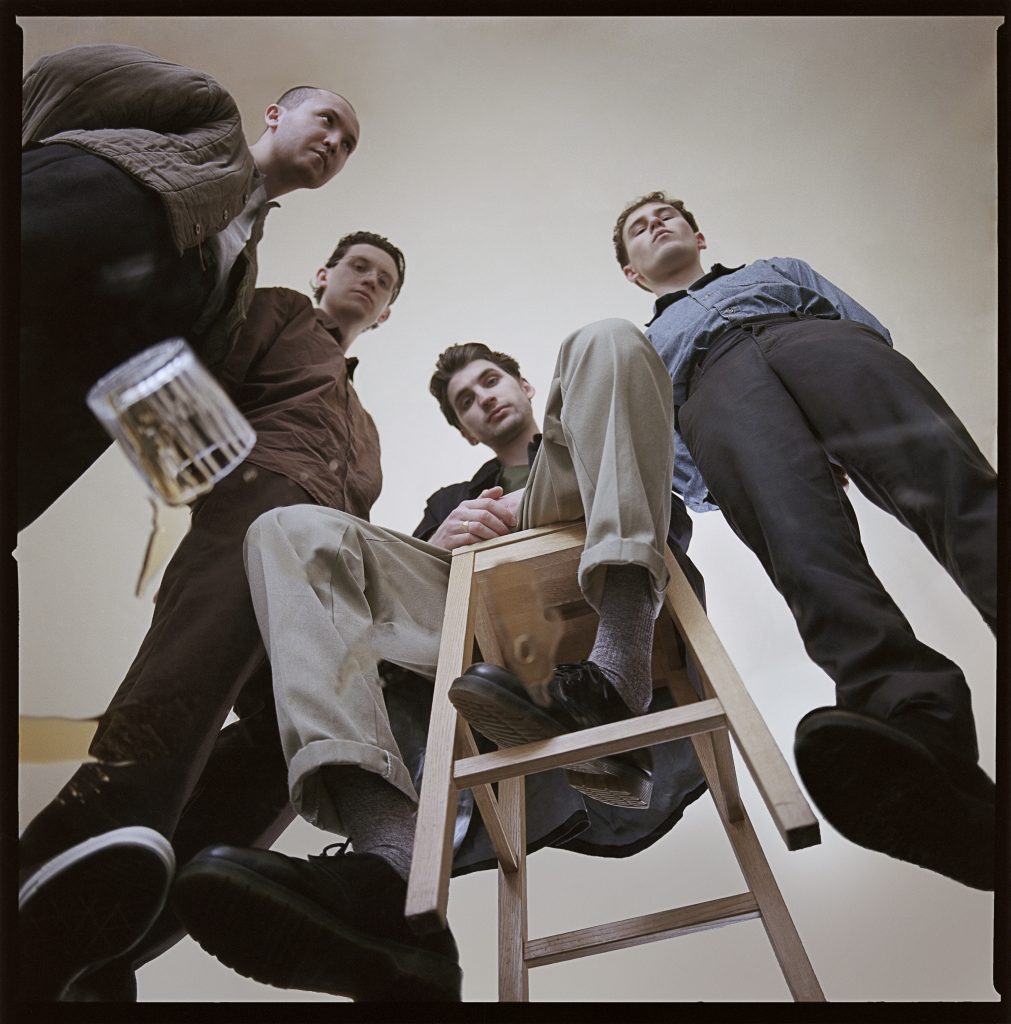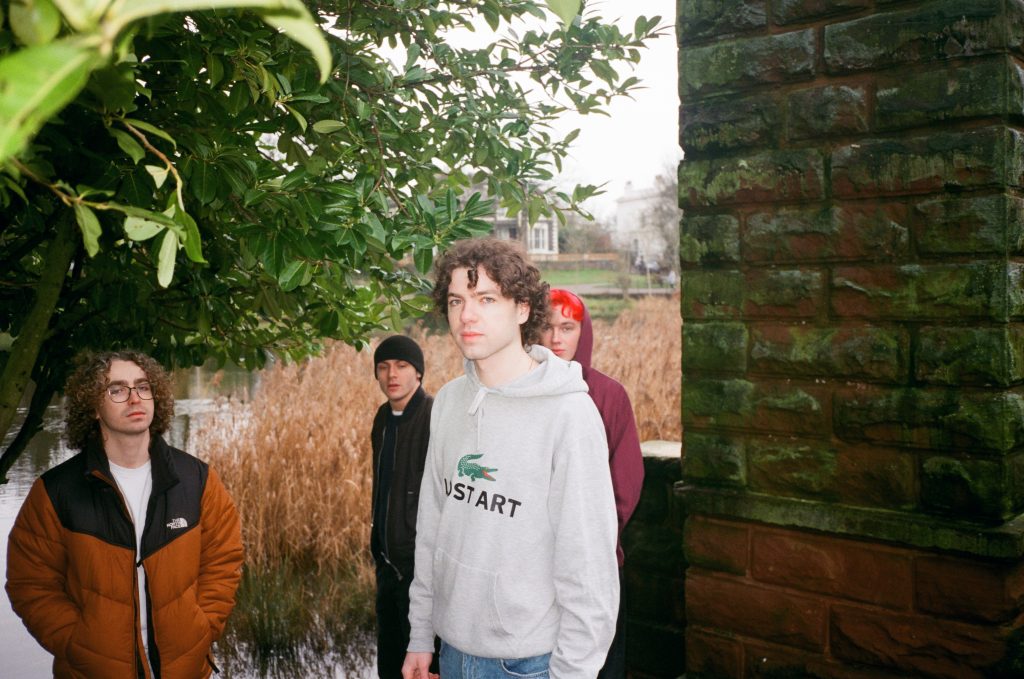Barrie On Their New Album and Why They’re ‘Happy to Be Here’

When you listen to Barrie you may feel like you’re slow dancing at a lightly-lit dance in a Stranger Things episode. Or perhaps roaming the streets of Chinatown as a teenager. Hailing from different corners of the globe such as São Paulo via Berlin, Baltimore, London, Boston and upstate New York, Brooklyn was the special place for Barrie to create their musical magic. The daydream electric pop machine is comprised of Barrie Lindsay, Dominic Apa, Spurge Carter, Sabine Holler and Noah Prebish.
On May 3, Barrie released their first album Happy to Be Here which sparkles with the sound of the 80’s and alternative interpretations of classic Pop. Barrie talked with us about the energy of New York and their excitement for upcoming tour dates.
When describing your sound words such as “dreamy,” “modern pop,” and “electric groove” come to mind. How would you describe your sound?
It’s hard to hear it objectively. I like the idea of making something that feels like classic pop/alternative music but inevitably it ends up sounding like its own version of that thing because you can’t help injecting yourself.
Place has been an important aspect in your music such as your single Michigan. In this album, New York is threaded throughout. What makes New York, specifically Brooklyn, special for you?
I love using place as a starting point for lyrics; it’s so evocative. Specifically New York represents a lot in terms of musical, social, and life ambition — and I think that’s kind of universal. It’s an overwhelming city. It’s been pretty well picked clean by musicians and writers, but instead of finding that intimidating in terms of finding your own way to write about it, I like interpreting the interpretations. There’s so much in the New York canon to draw from.
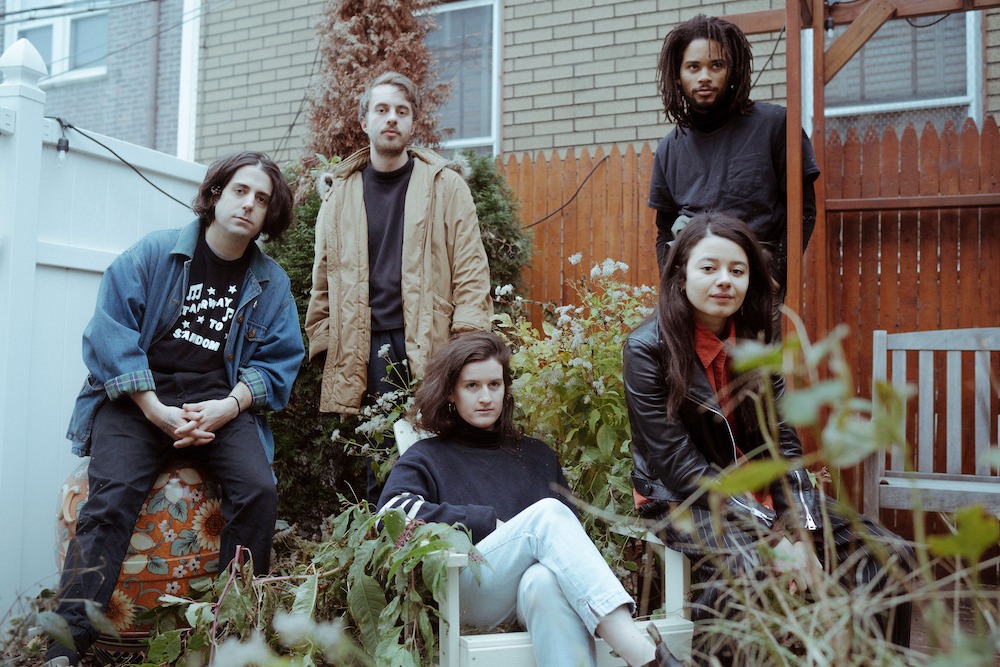
In Chinatown, you recollect on the past saying “Oh the light in Chinatown tonight, those are weaker days.” Is Chinatown one of your favorite areas in New York? What are some places in the Big Apple that leave you energized with creativity?
As someone new to New York, I found Chinatown to have a very distinct energy to it that felt like the New York energy I had imagined. A lot of Manhattan is pretty priced out and corporate, but Chinatown still has a grittiness and so many hidden DIY shows, parties, galleries, etc. squirrelled away.
Happy to Be Here seems to capture the sound of the 80s through a futuristic lens. Do you draw inspiration from artists the 80s era?
I love tons of 80s music but when I think of my big heroes, it’s mostly 60s and 70s artists. But yeah there are certainly a lot of 80s synth and production timbres that I’m drawn to. I’m not that conscious of chasing eras or genres; it’s usually one song, one sound, one progression that inspires.
Your lyrics have a plethora of powerful underlying themes such as reminiscing in Casino Run, yearning for someone to stay in Darjeeling and even the struggle of sameness in Clovers. Lyrically, how did you develop this project?
I’m pretty passive with lyrics; I don’t like to force anything. I write the music first, and see what words or ideas pop up listening back. People like to have very cut and dry explanations of lyrics, but it’s not that clean. I don’t have a formula for the lyrics, I want people to hear whatever they hear in them. Even if that means misunderstanding words — I think that’s great and super interesting too.
In Teenager, the lyrics suggest a memory of teenage love in Central West Park. Do you draw your inspiration from your teenage years?
I tend to write lyrics looking outwards, reflecting on people and things around me — which are inevitability colored by how I personally am taking them in. So I’d say that more often, it’s more likely that I’d draw inspiration from teenagers around me than my own teenage years.
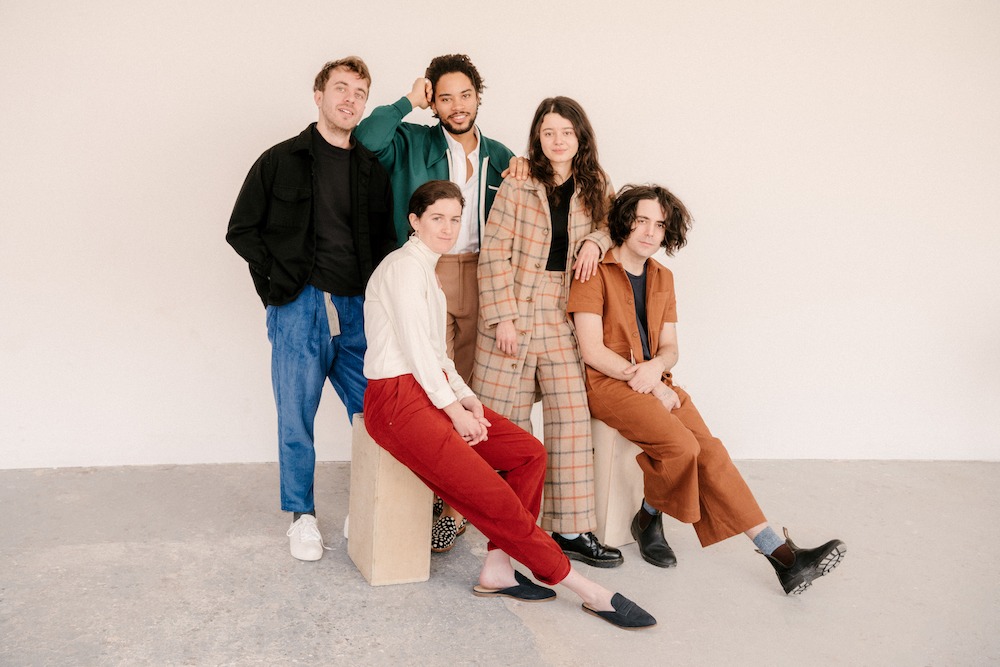
L to R: Noah Prebish, Barrie Lindsay, Spurge Carter, Sabine Holler and Dominic Apa
Photo credit: Marcus Maddox
Having different backgrounds, each of you bring something unique to the creative table. What have you learned from each other?
From Sabine, I’ve learned to take care with lyrics; people really listen and care about what you’re saying. So I take more responsibility with them. From Noah, not being lazy about details — giving synths motion and taking care and thought with every sound — fighting my lazier production habits. From Spurge, keeping the big picture in mind: what are you trying to accomplish with this song and how does it fit into your overall identity and vision, and the larger scene of music and culture? From Dom, I learned to just let him do the drumming. And he’s encouraged me to embrace my own style and vision, he’s done a lot to validate my songwriting which I greatly appreciate.
Though this is not your first rodeo as a band, Happy to Be Here is your first album. What was it like dropping an introductory album? What inspired the title?
This is the first album I’ve ever released. My bandmates have released albums and EPs in other projects. I’ve put out singles and EPs but there’s something much more planting-the-flagpole about an album. Spurge came up with the title; it’s a phrase we’ve all found ourselves saying a lot over the past few years. It captures the sentiment of serendipity and gratitude that we’ve felt surrounding the project from the jump.
With tour dates approaching, what excites you most when you’re on stage?
We’re starting to have shows where some people in the audience are singing along to the lyrics, and that’s a very cool feeling.


